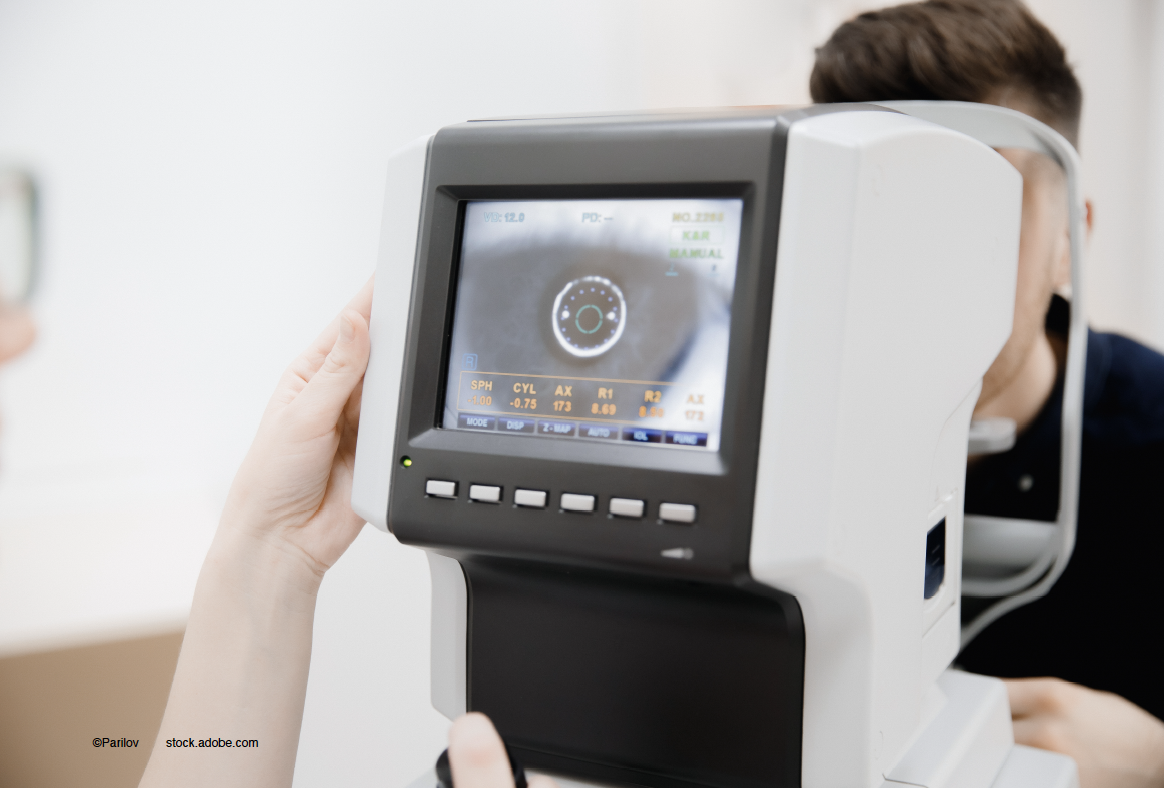Article
Detecting signs of early glaucoma via high-tech imaging
Author(s):
Flavoprotein fluorescence could serve as a new biomarker, according to a Mount Sinai study.
This measurement could potentially be used as a first-line indicator to monitor of glaucoma progression for the patient and the physician, says Richard B. Rosen, MD.

A novel non-invasive ocular imaging method may be able to detect an early indicator of glaucoma in time to prevent disease progression and vision loss, according to research from the New York Eye and Ear Infirmary of Mount Sinai (NYEE). The study was published in the July/August issue of Ophthalmology Glaucoma.
The study focused on measuring flavoprotein fluorescence (FPF) in the eye. Mitochondria—which are responsible for generating energy in cells—produce FPF when they are stressed, and levels of FPF are elevated in people with glaucoma compared to those with normal eyes.
Mitochondrial dysfunction in the optic nerve, which sends light signals to the brain and is critical for vision, can eventually lead to loss of cells and tissue damage, causing multiple eye diseases such as glaucoma, and macular degeneration, as well as other retinal damage. This is the first comprehensive study to look at FPF changes in the optic nerves in patients with different stages of glaucoma compared to healthy eyes.
“Glaucoma is difficult to diagnose in early stages, and often physicians agonize to confirm subtle signs of progression in advanced stages. Once structural damage to the optic nerve has occurred, it is currently not possible to reverse. The better we become at identifying early or ongoing degeneration, the more proactive we can be at implementing protective therapy,” says principal investigator Richard B. Rosen, MD, Vice Chair and Director of Ophthalmology Research at NYEE and Chief of the Retina Service for the Mount Sinai Health System. “Our study shows FPF may be useful as an objective measure for predicting glaucoma progression earlier than measuring structural damage, with similar sensitivity to visual field changes but easier and potentially more consistently.”
A team of researchers used the OcuMet Beacon—a fundus camera with special filters that specifically isolates the fluorescence, developed by OcuSciences Inc.—to analyze 86 eyes. Fifty of the eyes had glaucoma, based upon thinning of the retinal fiber layer, and 36 had no disease. They found FPF, an indicator of mitochondrial oxidative stress, was significantly higher in glaucoma eyes compared with normal eyes, especially in early-stage glaucoma cases where damage is difficult to detect. Levels of FPF correlated with other means of detecting glaucoma including visual field mean deviation, visual field pattern deviation, and retinal nerve fiber layer thickness.
These results suggest that FPF could be used clinically to reliably and objectively detect metabolic evidence of injury due to glaucoma, limiting the need for frequent visual field testing, the gold standard for measuring visual function. In fact, the researchers say, FPF may be a more accurate measurement, as visual fields have a number of downsides—they are subjective, fluctuate with a patient’s attention, and patients can lose concentration during this assessment.
“Previous studies have demonstrated that when the mitochondrial oxidative stress is relieved by medication or surgery, the flavoprotein fluorescence levels go down. This makes the technique very attractive as a sensitive way of monitoring response to therapy,” explains Rosen. “This measurement could potentially be used as a first-line indicator to monitor of glaucoma progression for the patient and the physician.”
Researchers say their next step is to see if FPF can reliably monitor the effect of therapy for glaucoma patients, to see when treatment has flattened the risk curve of progression in advanced cases, as well as identifying patients who require early glaucoma intervention.
Newsletter
Don’t miss out—get Ophthalmology Times updates on the latest clinical advancements and expert interviews, straight to your inbox.




